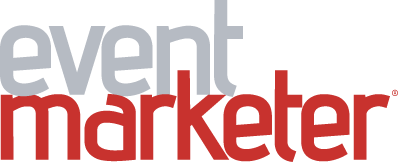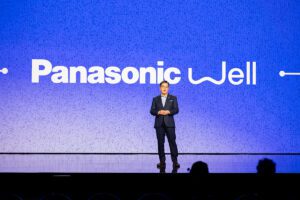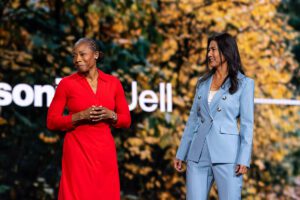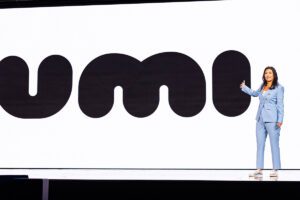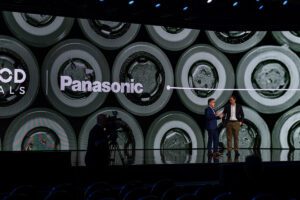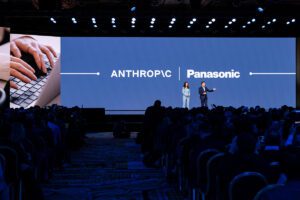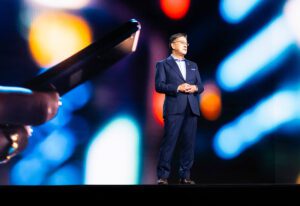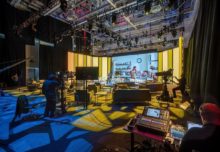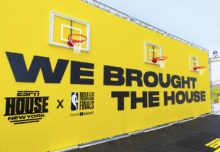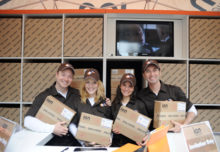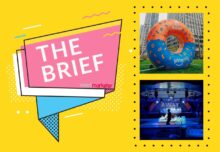In a dark ballroom at The Venetian Expo in Las Vegas, a spark of light streams across the screens. The host, actor Anthony Mackie, approaches center stage and holds up an item: “Panasonic’s story began over a century ago with this—the double socket. This is the spark that ignited decades of innovation and passion, comfort and connection, to every corner of the globe.”
It was the official kickoff moment for Panasonic’s opening keynote on Jan. 7 at CES 2025, one of the most high-profile keynote stages in the world, with brands selected based on how their story of innovation will contribute to the global conversation that the Consumer Technology Association aims to create that year at its show.
At the core, a successful keynote relies on strategic timing and storytelling, and for Panasonic, the timing was impeccable. As one of the show’s oldest exhibitors, the brand has attended every CES since the first event in 1967. And its story mirrors that of the show—as consumer technology becomes increasingly more layered and intangible, Panasonic itself is on the precipice of a new era of innovation around responsible AI.
“As all good marketers know, a keynote needs to be at the intersection of what the audience is needing and what they want to hear, and what we want to deliver, and if, and when, that intersection hits, then it’s the right time for us to say, ‘We’ve got a great story. We need everyone to know it right now,’” says Megan Pollock, vp-branding and strategic communication at Panasonic North America.
Enter: “Well in the Future,” a message the brand presented at CES encompassing products and solutions supporting environmental and family wellbeing that paved the way for the introduction of Panasonic’s new venture and business incubator, Panasonic Well, which will leverage AI and advanced tech to “enable healthier lives.”
The keynote from 8:30 to 10:00 a.m. opened with dj and record producer Steve Aoki spinning beats before Mackie, most recently of “Captain America: Brave New World,” took the stage. It was a lively program 18 months in the making.
To explore how the team set the stage for Mr. Yuki Kusumi, group ceo of Panasonic, we spoke with Pollock; Mike King, Panasonic’s head of creative and brand; and Kerry Job, vp-client services at InVision Communications (lead production agency) for best practices.
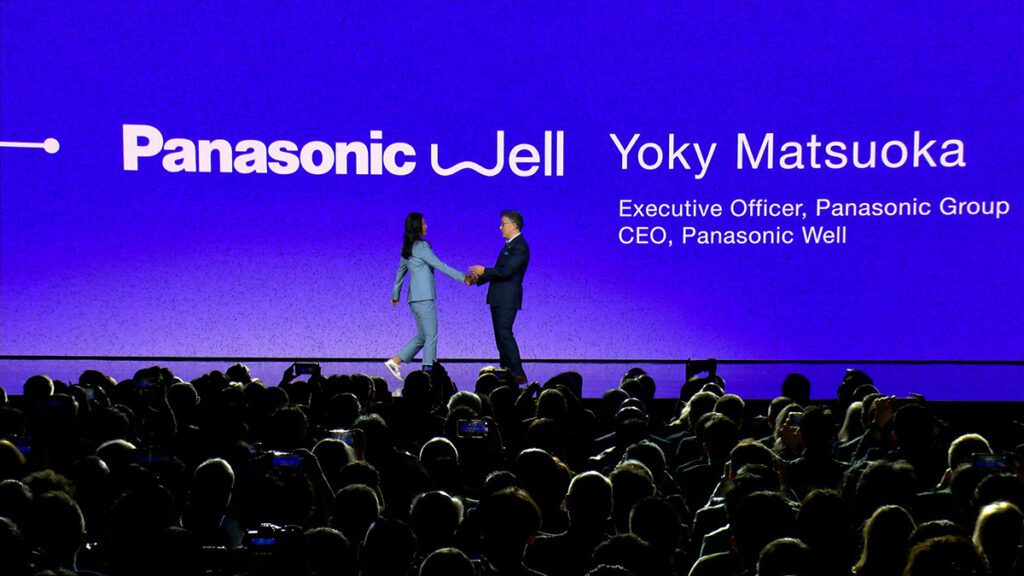
Know your moment.
As Pollock describes, a strong keynote program starts with the message and what it will mean to the people in the audience. CES attracts diverse attendees from across the globe, from media to investors. They’re bombarded with messaging and, in the case of this year’s show, planned to attend other keynotes by Delta Air Lines (at Sphere Las Vegas), NVIDIA, The Volvo Group, Waymo, and more.
In this way, the keynote is not an open forum; it’s almost like a tryout. Leveraging the corporate tagline “Create Today. Enrich Tomorrow.” as inspiration, the brand’s message offered a reintroduction moment to help audiences think beyond the brand as a TV or appliance company.
“It was a really robust group [of keynoters], but we did a very good job of staying the course,” Pollock says. “It was recognizing what is happening around us and how that’s going to impact the audience we’re speaking to, so that we could have the breakthrough we wanted.”
Let the stories do the heavy lifting.
The team began with a blank canvas, and led with their storytellers. Panasonic interviewed and enlisted entertainment and business luminaries to join the stage, and then told the stories of everyday people from around the world who are positively impacted by things like green energy innovation, which Panasonic is focused on.
“We went out and interviewed families about what they care about with regard to healthy indoor air quality, or the cost of heating and cooling a home, or how to be sustainable; we had Yoky Matusoka, Panasonic Well ceo, talking about taking a leadership position in this new arena of AI and how the new Umi app will help families, as just another expression of that,” King says. “We wanted to stay focused on ultimately what’s in it for the end user, the customer.”
In addition to Mackie, a New Orleans native, who is passionate about the environmental impacts of climate change, other guest speakers included J.B. Straubel, Tesla’s former chief technical officer and now ceo of Redwood Materials, Inc., which is focused on solutions to ease the impacts of battery production; Peter Bakker, president and ceo of the World Business Council on Sustainable Development; Wayne Usie, chief strategy officer of supply chain company and Panasonic subsidiary Blue Yonder; Dr. Myechia Minter-Jordan, ceo of AARP, a Panasonic Well collaborator; and Daniele Amodei, cofounder and president of AI safety and research company, Anthropic.
Make sure executives are invested.
The Panasonic CES keynote script process involved numerous conversations between Mr. Kusumi and the team as well as revisions, with investment and contributions by business units across the company. The rehearsal process was equally robust, with at least 10 different rehearsals at three different locations over the course of two months. Each iteration got stronger and stronger, according to the team.
Mr. Kusumi shared with the audience that he had become a grandfather, and shared a photo of his family. “He talked passionately about his personal concern for sustainability and making the world a better place for his grandchildren, and so the audience connected with him on a personal level,” King says.
Adds Job: “I think about a performer on a stage and where they dig deep for the most compelling way to present something. And they do have to be emotionally invested, and so I think bringing in his story, and why this all matters to him, was interesting.”
Don’t forget the transition moments.
Consider how you dial up or down energy and emotions in your program. Panasonic went full volume in the hour before the keynote as DJ Aoki performed on Panasonic Technics turntables, a brand that is celebrating its 60th anniversary. He not only filled the airspace as folks filed into the room to score a good seat (think: dancing and low-key, mosh-pit-style action), he shared his passion for the product on stage and on his social channels.
And as far as the presentation visuals, the team settled on beautiful, bold, “yet simple” graphics—less clutter and words to read, allowing the audience to focus on the voices on stage (the graphical spark we mentioned earlier served as a subtle “chapter-turner” of sorts throughout the program). The content design choice also provided the team a great deal of flexibility, given the long runway the team had from being accepted by the CTA to the actual keynote day.
What happens after the keynote.
Of course, once audiences exit a ballroom, the keynote messaging needs to weave into their experiences afterward. In the case of Panasonic, attendees could explore the vision of “Well into the Future” within a 15,000-square-foot exhibit that showcased the Panasonic Go growth initiative and key partnerships.
But it was a request from Aoki that added a layer of excitement. The artist was scheduled to perform in the booth at the end of the day (around 4 p.m., a slow period in the exhibit halls), but he wanted to arrive early to hang out with the team, which demonstrated how authentic his partnership is with the team and product. Ultimately, he drew massive crowds to the booth when he performed, with people “hanging over the stairs and coming from every direction.”
“The goal of the keynote is not to just get people into the booth, but you want there to be a driving force so that they’re not thinking, ‘I got everything, so I’ll skip the booth.’ I think that’s another reason that CES is so unique and a challenge we had that I think we succeeded with. People thought, ‘OK, now I definitely have to get to Panasonic’s booth.’”
More scenes from the keynote:
Photo credit: Panasonic; Phelps Creative

